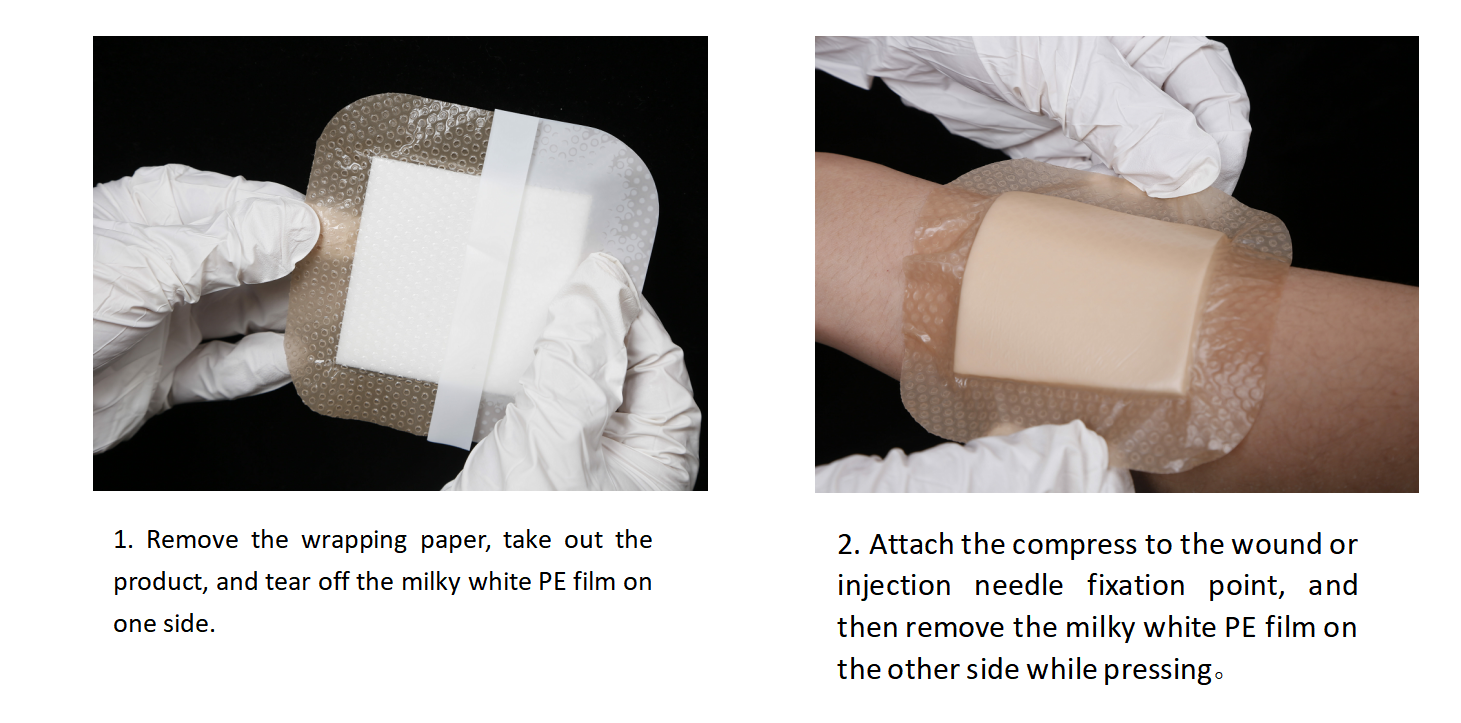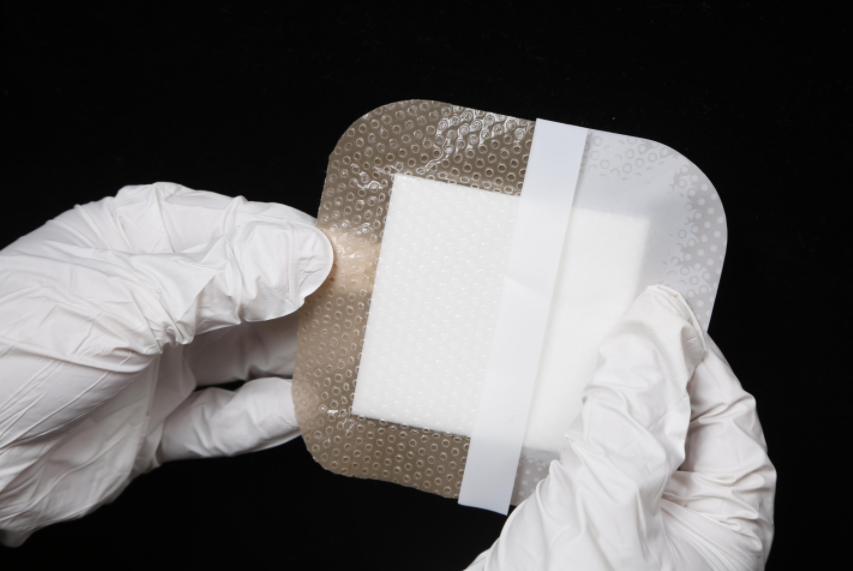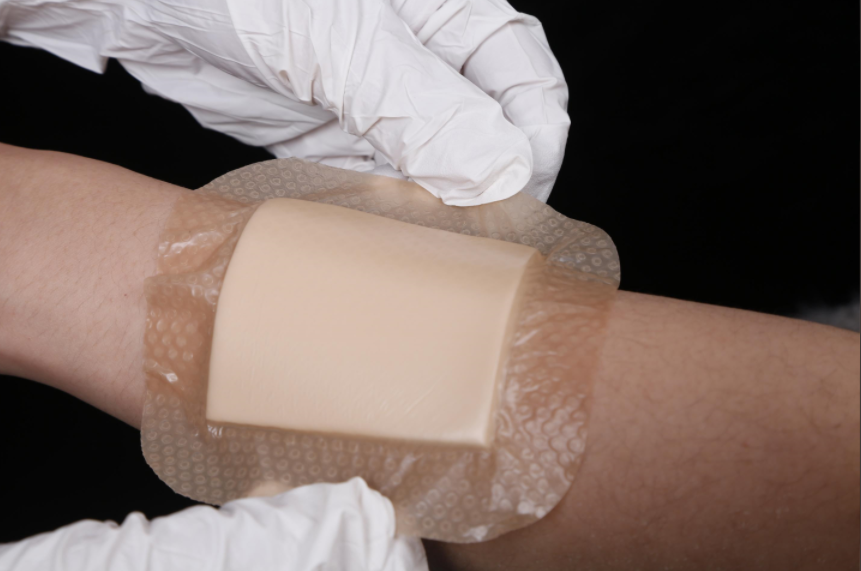Silicone Foam Dressing with Border
Edged silicone gel foam is a new type of medical functional dressing independently developed and produced by Hongao Medical and approved by the State Drug Administration for registration and marketing, registration certificate number: National Machinery Note 20223140748.
The product has a multi-layer composite structure, each layer of which is a flexible material. The porous silicone adhesive layer in contact with the wound surface has moderate viscosity, which plays a fixed role and does not adhere to the wet wound bed, which is conducive to the replacement of dressings. The polyurethane foam and absorbent pad in the core are double-layered, giving the soft polysilicone foam dressing a strong liquid absorption ability; The special cut flower process enhances the compliance of the product and makes it better fit to the wound. Due to its dense characteristics, the top layer of polyurethane backing film can effectively prevent the penetration of liquid water and bacterial particles, thus playing an insulating role. It is also hygroscopic, allowing gaseous water to evaporate through this membrane, synergistically maintaining a humid environment suitable for wound healing.




